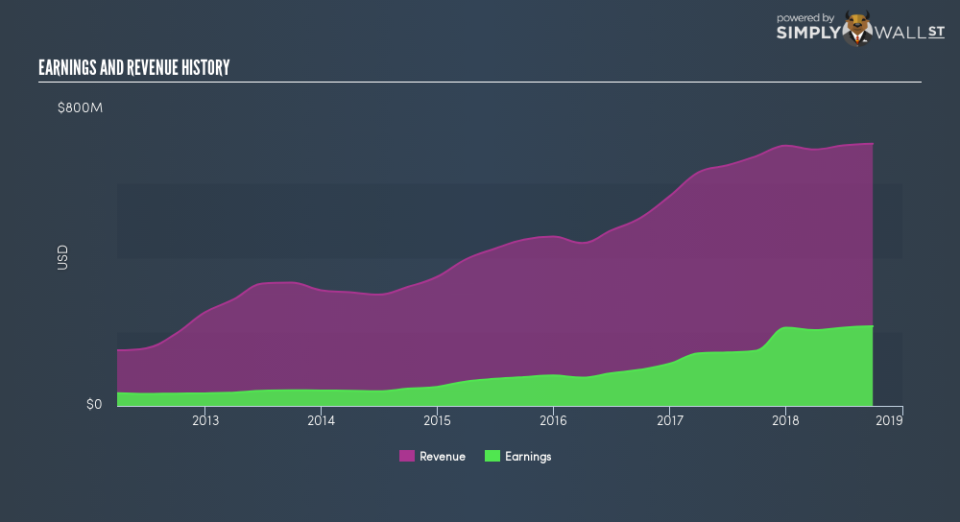Is Walker & Dunlop, Inc. (NYSE:WD) A Volatile Stock?

If you’re interested in Walker & Dunlop, Inc. (NYSE:WD), then you might want to consider its beta (a measure of share price volatility) in order to understand how the stock could impact your portfolio. Modern finance theory considers volatility to be a measure of risk, and there are two main types of price volatility. First, we have company specific volatility, which is the price gyrations of an individual stock. Holding at least 8 stocks can reduce this kind of risk across a portfolio. The other type, which cannot be diversified away, is the volatility of the entire market. Every stock in the market is exposed to this volatility, which is linked to the fact that stocks prices are correlated in an efficient market.
Some stocks mimic the volatility of the market quite closely, while others demonstrate muted, exagerrated or uncorrelated price movements. Beta can be a useful tool to understand how much a stock is influenced by market risk (volatility). However, Warren Buffett said ‘volatility is far from synonymous with risk’ in his 2014 letter to investors. So, while useful, beta is not the only metric to consider. To use beta as an investor, you must first understand that the overall market has a beta of one. Any stock with a beta of greater than one is considered more volatile than the market, while those with a beta below one are either less volatile or poorly correlated with the market.
View our latest analysis for Walker & Dunlop
What WD’s beta value tells investors
Walker & Dunlop has a five-year beta of 1.03. This is reasonably close to the market beta of 1, so the stock has in the past displayed similar levels of volatility to the overall market. Using history as a guide, we might surmise that the share price is likely to be influenced by market voltility going forward but it probably won’t be particularly sensitive to it. Share price volatility is well worth considering, but most long term investors consider the history of revenue and earnings growth to be more important. Take a look at how Walker & Dunlop fares in that regard, below.
Could WD’s size cause it to be more volatile?
Walker & Dunlop is a small company, but not tiny and little known. It has a market capitalisation of US$1.4b, which means it would be on the radar of intstitutional investors. Small companies often have a high beta value because the stock price can move on relatively low capital flows. So it’s interesting to note that this stock historically has a beta value quite close to one.
What this means for you:
Walker & Dunlop has a beta value quite close to that of the overall market. That doesn’t tell us much on its own, so it is probably worth considering whether the company is growing, if you’re looking for stocks that will go up more than the overall market. In order to fully understand whether WD is a good investment for you, we also need to consider important company-specific fundamentals such as Walker & Dunlop’s financial health and performance track record. I urge you to continue your research by taking a look at the following:
Future Outlook: What are well-informed industry analysts predicting for WD’s future growth? Take a look at our free research report of analyst consensus for WD’s outlook.
Past Track Record: Has WD been consistently performing well irrespective of the ups and downs in the market? Go into more detail in the past performance analysis and take a look at the free visual representations of WD’s historicals for more clarity.
Other Interesting Stocks: It’s worth checking to see how WD measures up against other companies on valuation. You could start with this free list of prospective options.
To help readers see past the short term volatility of the financial market, we aim to bring you a long-term focused research analysis purely driven by fundamental data. Note that our analysis does not factor in the latest price-sensitive company announcements.
The author is an independent contributor and at the time of publication had no position in the stocks mentioned. For errors that warrant correction please contact the editor at editorial-team@simplywallst.com.

 Yahoo Finance
Yahoo Finance 
